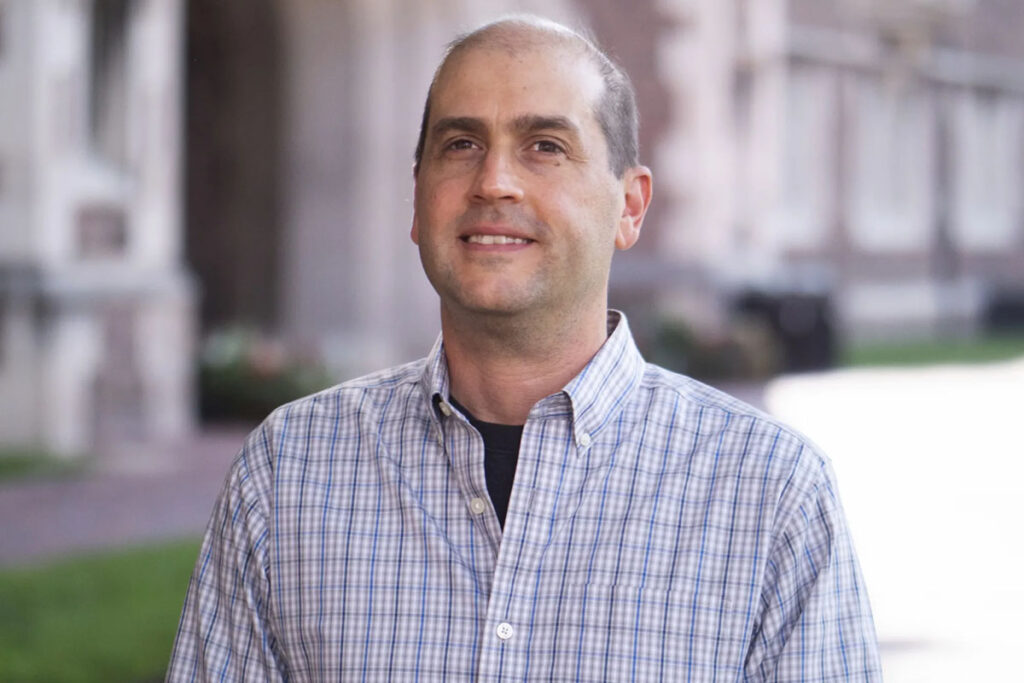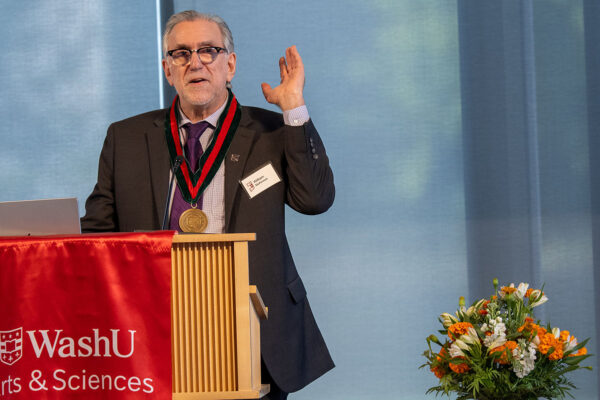Some 2.3 to 2.4 billion years ago, Earth underwent a monumental transformation that forever altered the planet’s course. Cyanobacteria evolved a new kind of photosynthesis that unleashed tremendous amounts of oxygen into the oceans and atmosphere, setting the stage for life as we know it.
The oxygenation of the planet, known as the “Great Oxygenation Event” or GOE, was undeniably monumental, but relatively little is known about the exact timing of the event or the geochemical conditions that made it possible. And the more scientists can better understand the circumstances of vast planetary change, the better equipped humans can be facing the impacts of climate change today.

David Fike, the Glassberg/Greensfelder Distinguished University Professor of Earth, Environmental, and Planetary Sciences in Arts & Sciences, is leading the American contingent of a massive international drilling project called GOE-DEEP. As the name suggests, the $3.1 million project, funded by the International Continental Scientific Drilling Program and a consortium of national science agencies, will extend deep into the Earth — and deep back in time — to study the remaining traces of the GOE.
The project is taking place in Gabon, Africa, one of the few places on Earth with sedimentary rocks from this time period that have remained relatively undisturbed for the last couple billion years. “Based on our initial surveys, we believe this area preserves some of the most pristine deposits of this age, providing us a unique window into Earth’s history at this time,” said Fike, who is also a fellow of the McDonnell Center for the Space Sciences at Washington University in St. Louis.
Drilling began in the summer and will end next summer. In total, there will be 11 drilling sites ranging from about 500 meters to 3-4 kilometers deep. Fike and his team will study samples at WashU using a secondary-ion mass spectrometry device that can detect and measure trace levels of various elements and their isotopic compositions in minerals. The findings will provide clues about the changing amount of oxygen in the environment at the time.
As Fike explained, it’s not possible to find preserved pockets of atmosphere from so long ago. But rocks that were at the Earth’s surface at that time should bear traces of the elements that interacted with the air. Fike and his team are especially interested in minerals that contain iron, sulfur or other reactive elements that would readily oxidize if exposed to oxygen.
“By drilling in different locations at different depths, we’re trying to understand the timing and pace of the oxygenation event,” Fike said. “Did it happen in a geological blink of an eye, or did oxygen slowly accumulate over hundreds of millions of years?”
The timing of the GOE would have had huge implications for all life on Earth, Fike said. “Most life forms at the time were anaerobic, which means they couldn’t survive in oxygen-rich environments,” he said. “The oxygenation of the atmosphere was one of the first environmental catastrophes on the planet.”
The rock samples that already were collected are being stored in Norway. Fike plans to visit later this year to gather select samples and bring them to WashU. He also likely will visit Gabon next summer to observe the drilling firsthand.
Gabon is a difficult place to drill, he said. “It’s hot and humid, and the ground is covered in thick vegetation. But understanding the history of oxygen on Earth is worth the trouble. We can’t really tell the story of life on Earth until we know more about this monumental event.”
Originally published on the Ampersand website



